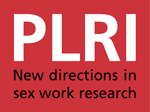Sexual behaviour and practices: A study of Female Sex Workers in Mumbai
Due to higher use of condoms in commercial sex and very low use with spouses, no effort was made to understand the variation in condom use with sex workers and wives. However, a logistic regression analysis was performed to understand the predictors of condom use with casual female partners. It has been found that the level of education of the study clients seems to have a significant bearing on condom use. The higher is the level of education, higher is the chance of using a condom. In case of girl friends, education also does not seem to have a significant

